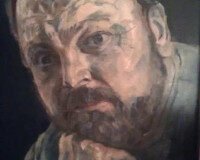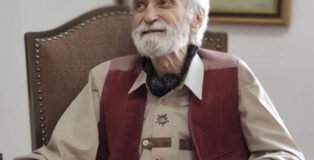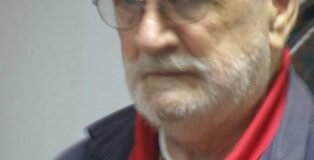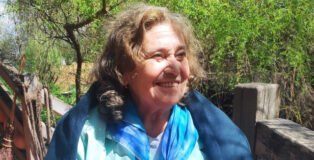[:ro]Kovács Géza[:en]Kovács Géza[:]
[:ro]
web: www.kovacsgeza.com,
Prezentare Demers Artistic
Lucrări însorite
Le-am remarcat aceste lucrări însorite, pe care le expune aici Kovács Géza, de mai mulţi ani. Nu-l cunoşteam personal pe artist, în schimb îi cunoşteam lucrările. Ştiam că a participat în străinătate la unele tabere şi expoziţii importante şi a devenit un sculptor remarcabil, precum vedeţi astăzi când ne-a adus aici această adevărată pădure de artefact. Sunt lucrări foarte atent gândite. La prima lectură putem vedea că ele apelează la nişte obiecte găsite, gata făcute. Dar acest lucru este mai puţin esenţial la dânsul, decât la un alt artist. Mă gândesc la Picasso, care a întors un ghidon de bicicletă şi o şa, pe care le-a transformat într-un taur.
Aici lucrurile stau altfel. Sculptorul Kovács Géza le încorporează în operă aceste unelte, acest instrumentar rustic, dar ele primesc o conotaţie secundară pentru că treptat se înglobează într-o materie misterioasă şi devin altceva. Se înnobilează, se umanizează, devin într-un fel semne ale spaţiului social, păstrând, desigur, ceva din prospeţimea acestor elemente. Păstrează ceva din calitatea şi din funcţionalitatea lor, pe care le transformă, devenind treptat altceva. Le scoate din sfera realului, transformându-le într-o sferă simbolică, într-o sferă a semnificaţiilor.
Prin acest procedeu cred că ele îşi dobândesc calităţi de artăfact. Găsim aici două tipuri de lucrări. Unele sunt din bronz, fiind opere de sine stătătoare, iar altele din fier, care sunt assablage, termen folosit în avangarda clasică. Din obiectele pe care le-a găsit artistul în peregrinările sale, transformându-le, a făcut assamblage. Dialogul cu aceste lucrări ne rezervă multe surprize. Îndeamnă la meditaţie şi la un efort intelectual pentru a le descifra mesajul.
Niciodată nu le vom putea descifra în întregime, rămâne un anumit tip de mister, care face parte, de fapt, din artă.
Le-aş propune edililor de astăzi asemenea lucrări, care ar putea fi mărite şi ar deveni nişte monumente contemporane.
Gheorghe Vida, critic de artă, 1 martie 2005, Galeria ARTIS, Bucureşti
website link: www.kovacsgeza.com,[:en]
web: www.kovacsgeza.com,
Prezentare Demers Artistic
Cheerful Sculptures
I have noticed these sunny artworks exhibited here by Kovács Géza, already years before. I have not known the artist, but I have known his works in turn. I knew that he has been partaking abroad in significant camps and exhibitions and that he has become a remarkable sculptor, as you can see today, when he brought us here this genuine forest of artifacts. These are works thought with great attention. At first sight we can see that they make use of found, ready-made objects. This practice, however is less important with him than with any other artists. I have in mind for instance Picasso, who turned upside down a bycicle handle-bar and a saddle, turning them into a bull.
Here we have another situation. The sculptor Kovács Géza incorporates these objects, these rustic set of instruments, but they gain a secondary connotation and gradually turn into a mysterious material, becoming something new. They get ennobled, they become humanized, turning someway int signs of the social space, retaining of course a certain degree of the freshness of these elements. They do conserve something of their initial quality and functionality too, which they transform, generating something else. The artist takes them out of the domain of reality and turns them into a symbolical sphere, into a sphere of the significances.
Through this procedure, in my opinion, these objects gain artifact qualities. We find here two types of craftworks. Some of them are made of bronze, being self-standing artworks, the others of iron: “assamblages” to name them with the term of the classical avantgarde. The artist transformed the objects he has found during his wanderings into assamblages. The dialogue with these artworks reserve us many surprises. They drive us to meditate and to make an intellectual effort to decipher their message.
We will never make out integrally these messages however, a certain mistery does remain, that constitutes in fact an element of art.
I would recommend to the attention of todays aediles such works that could be magnified becoming real contemporary monuments.
Gheorghe Vida, art criticist, March 1, 2005, ARTIS Gallery, Bucharest, Romania
website link: www.kovacsgeza.com,[:]















Comentarii recente